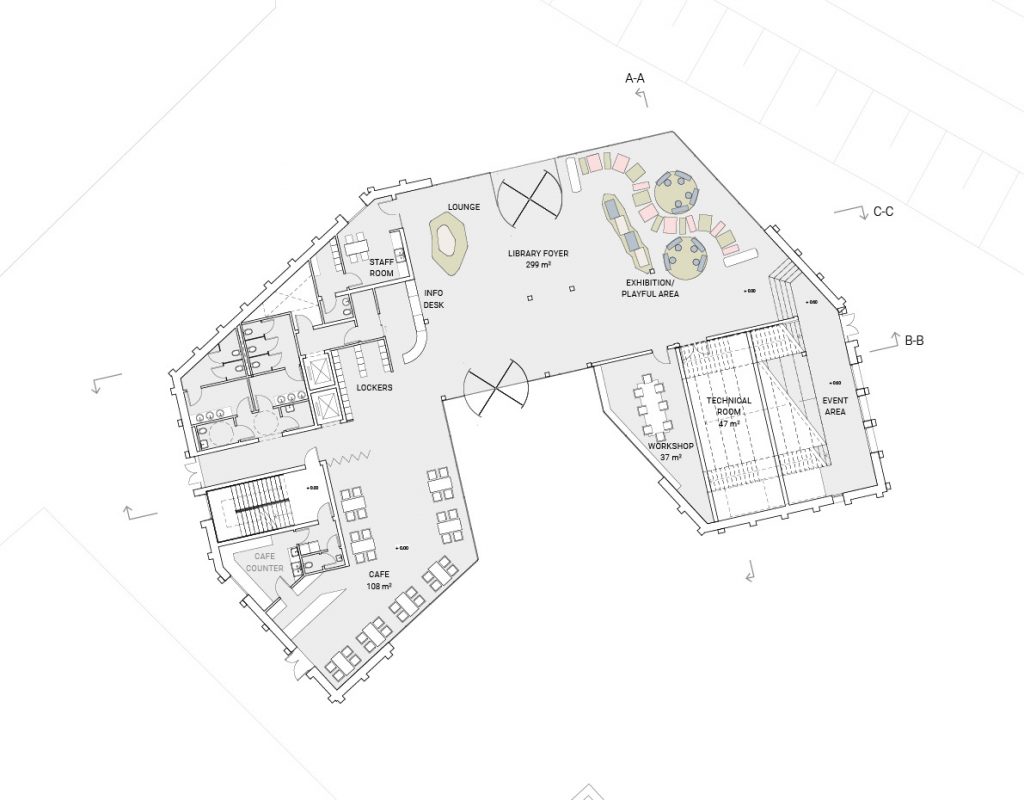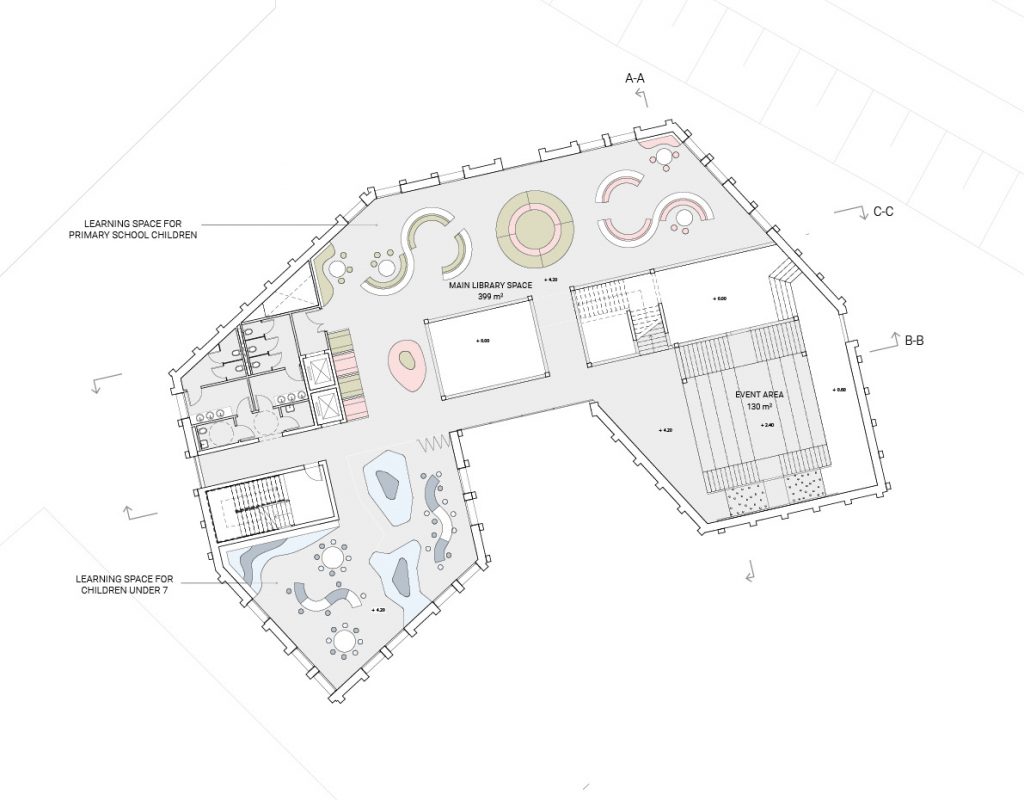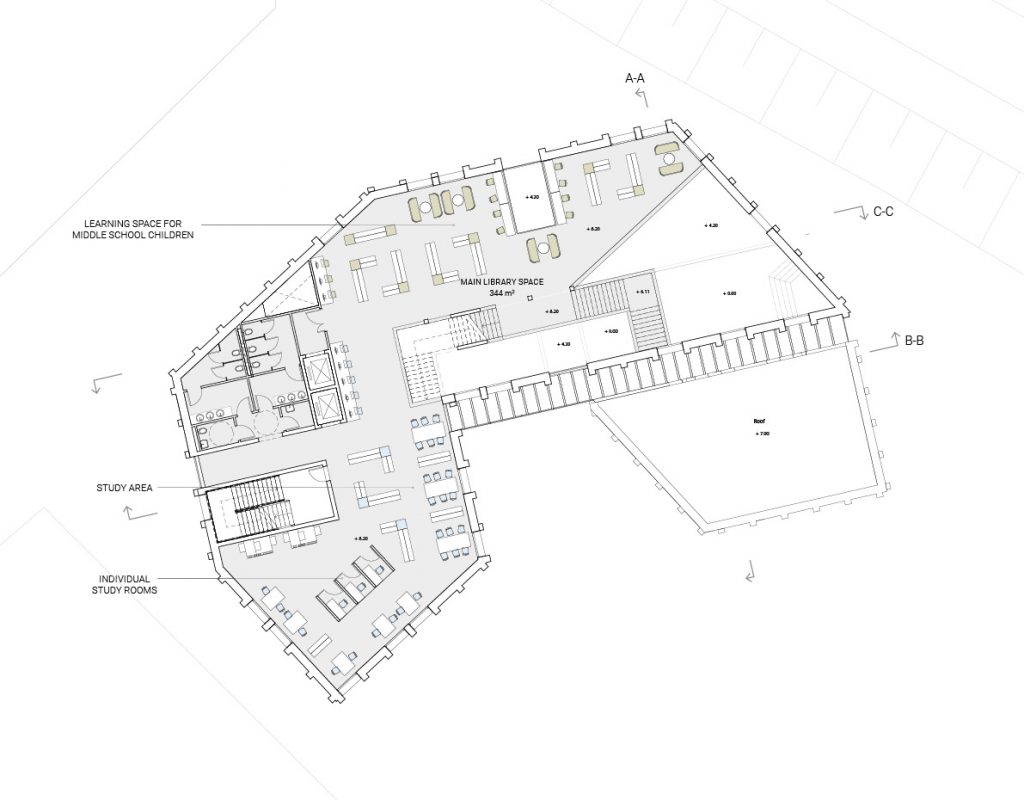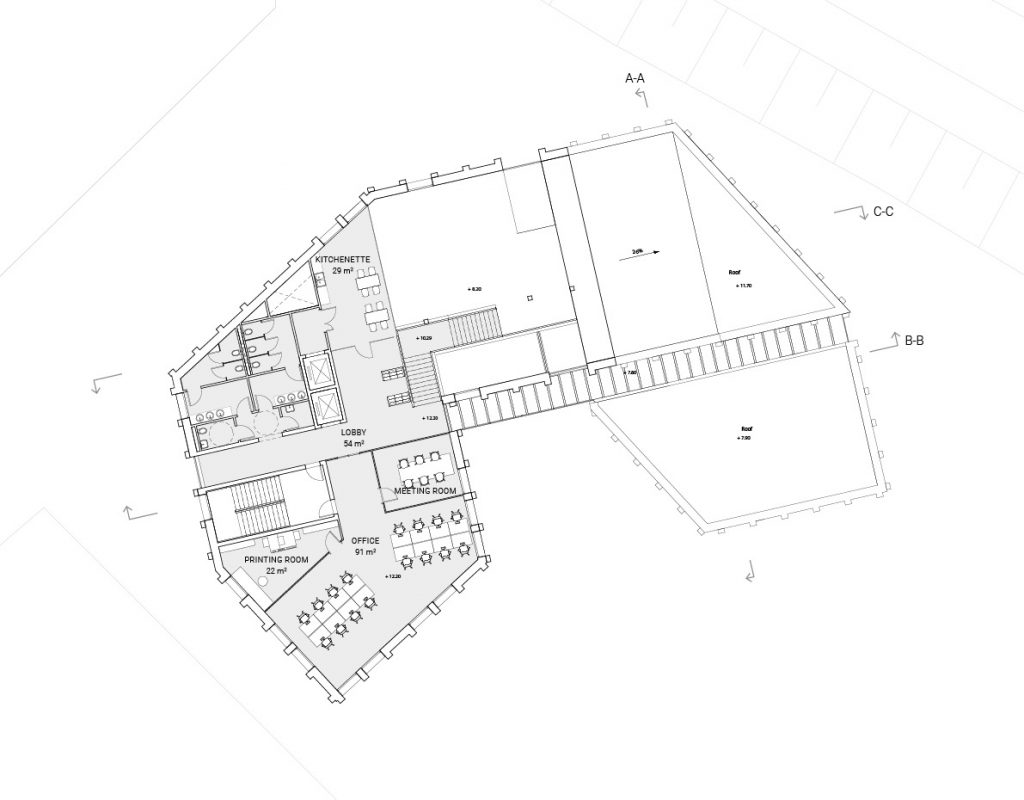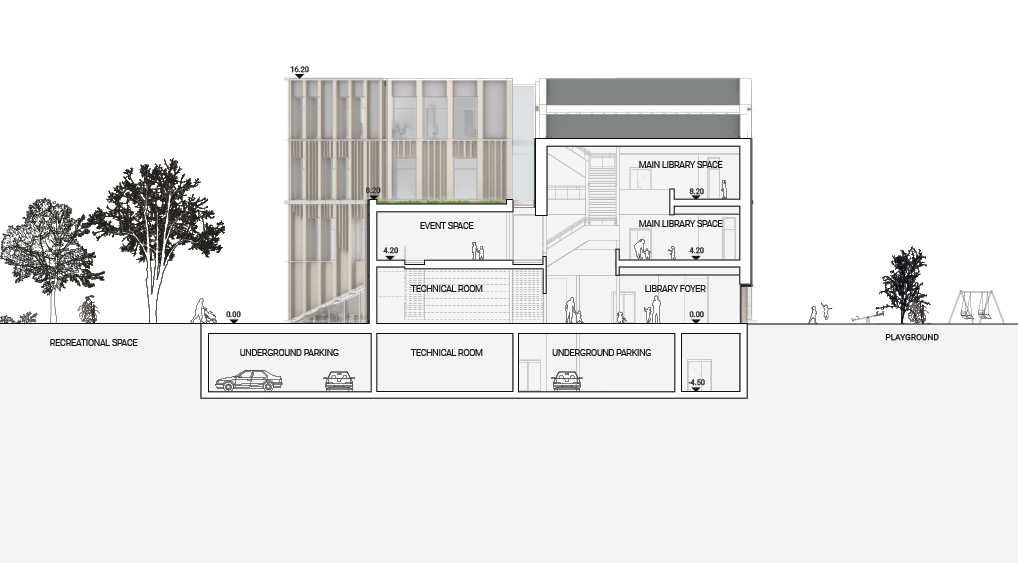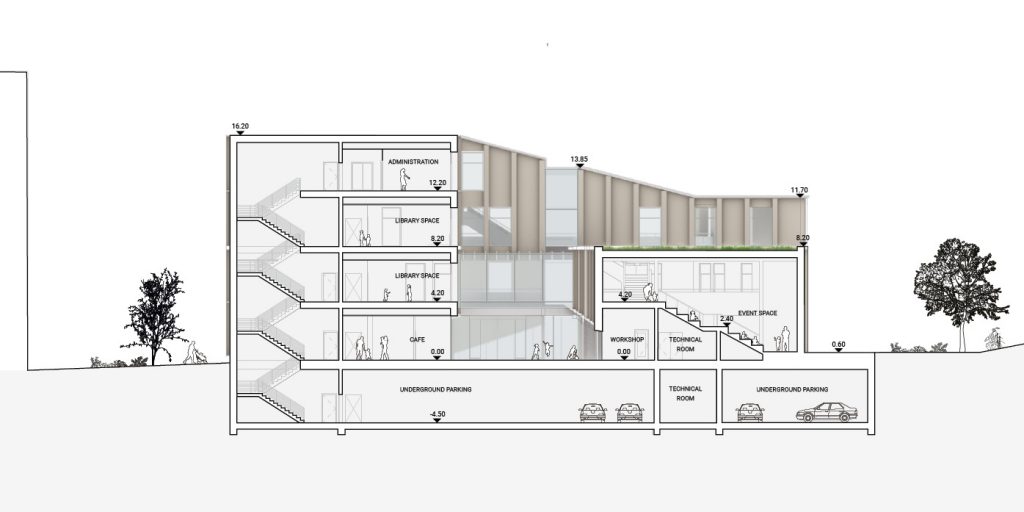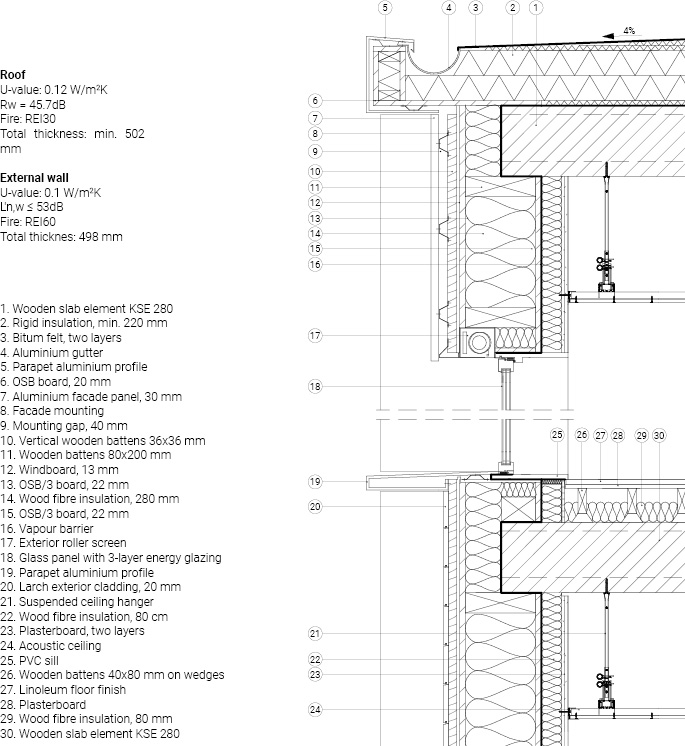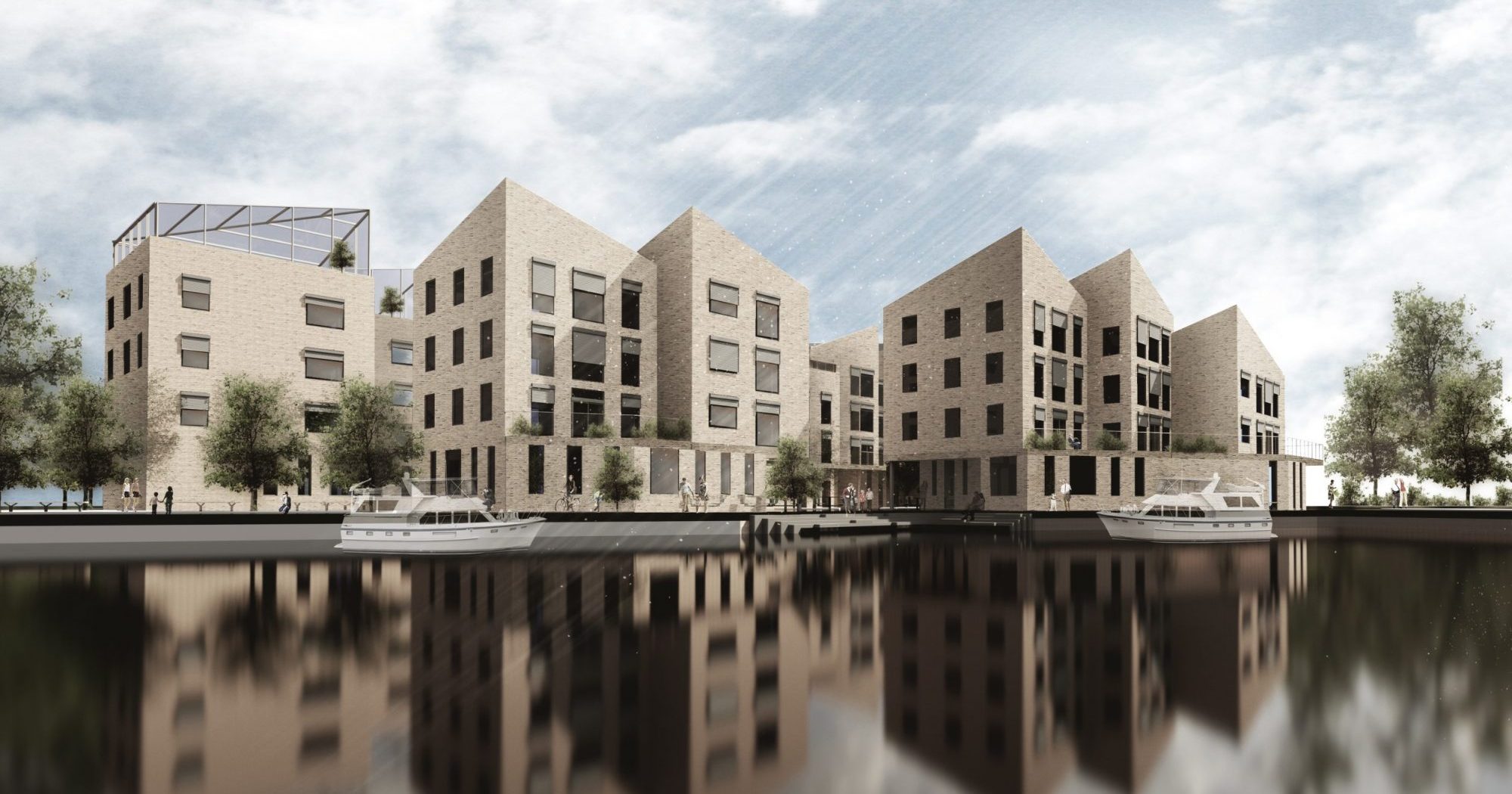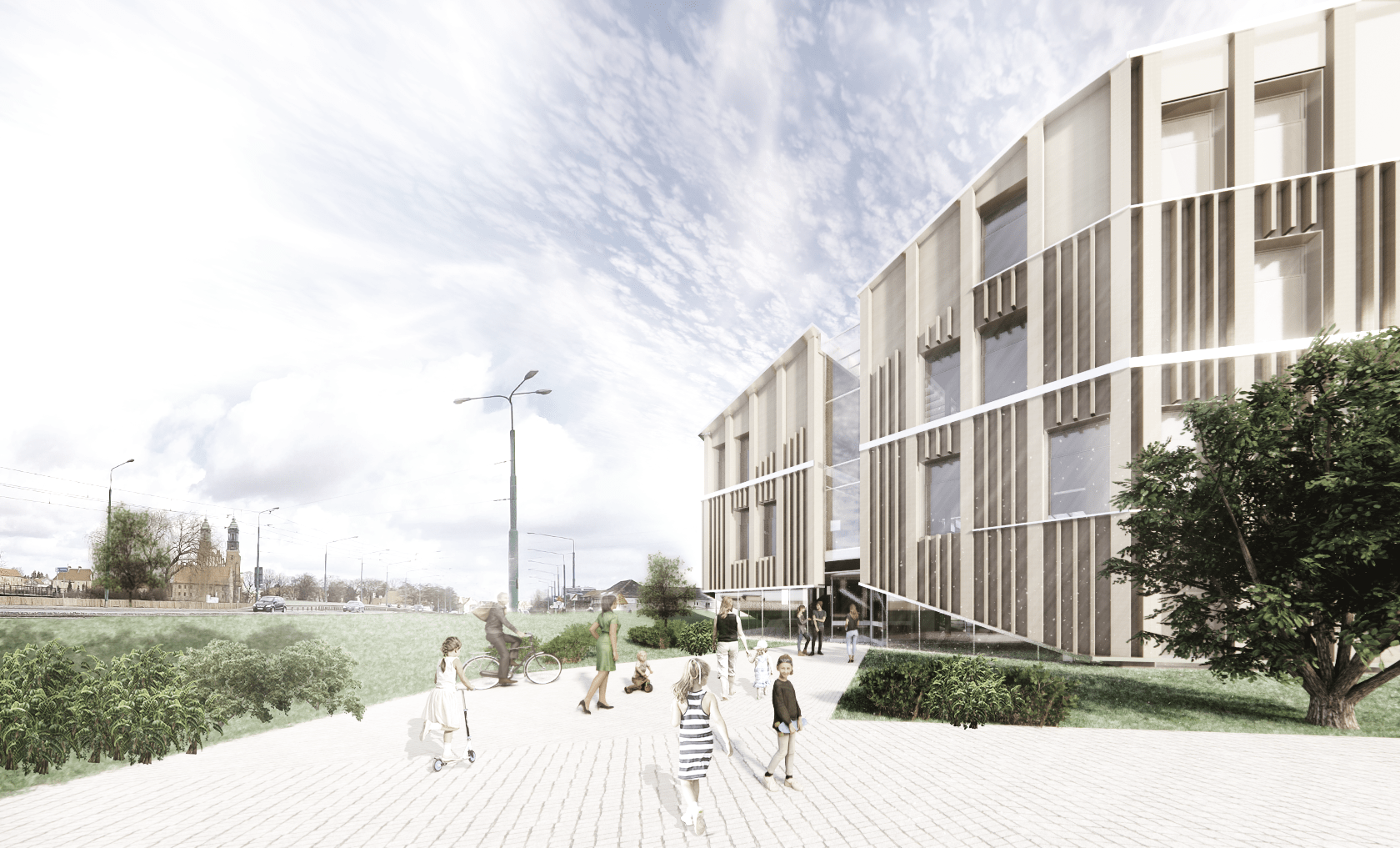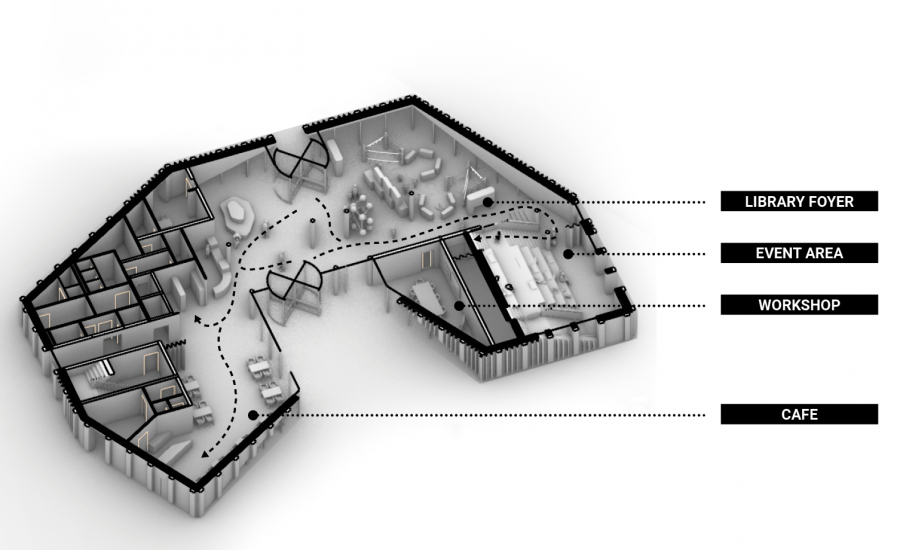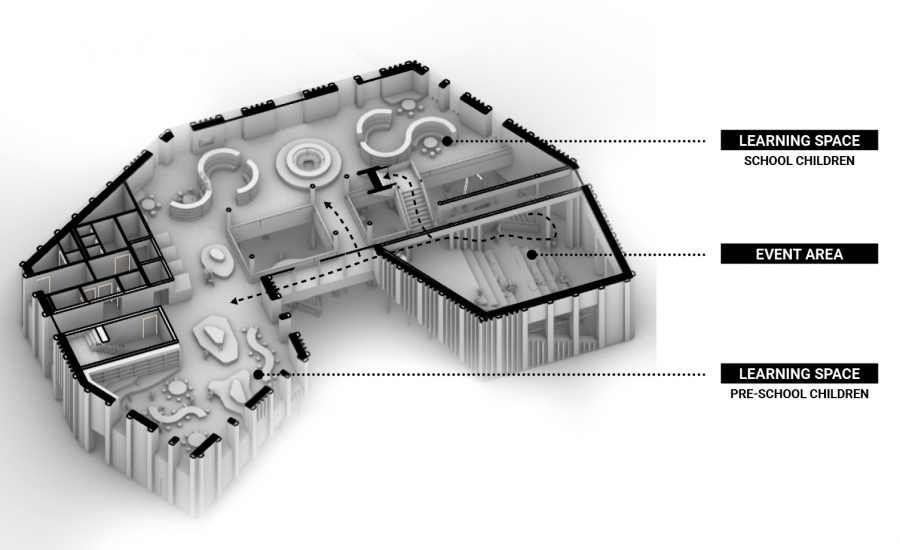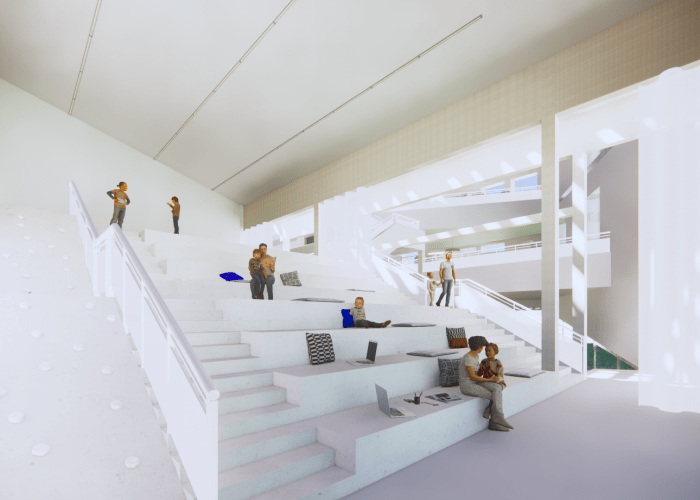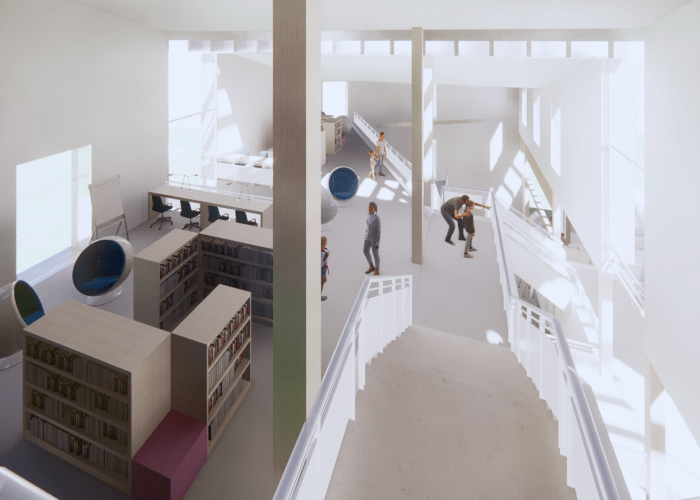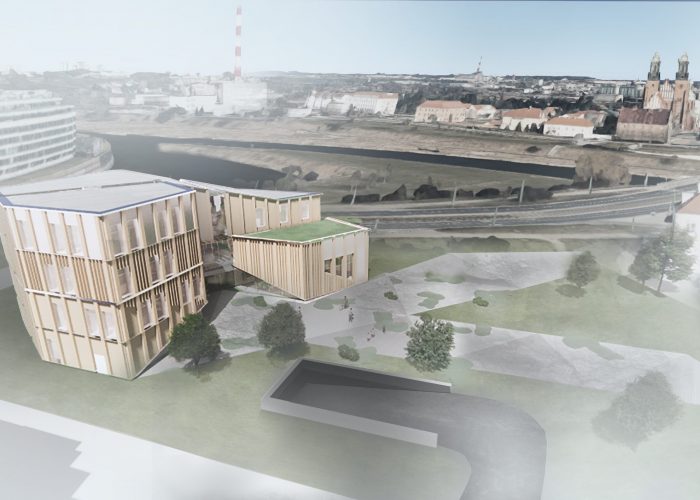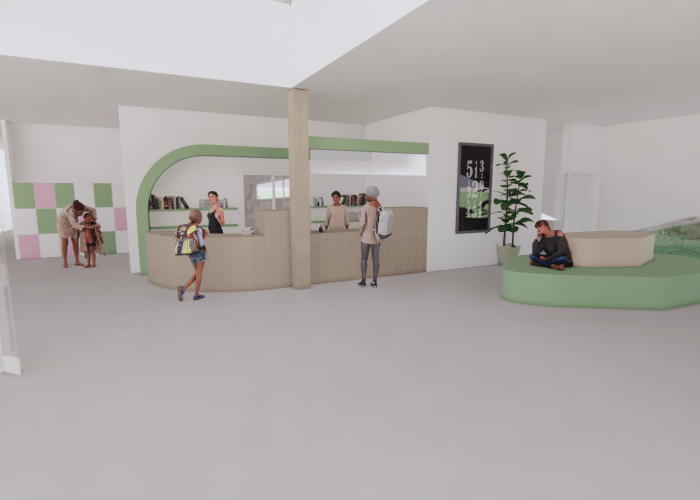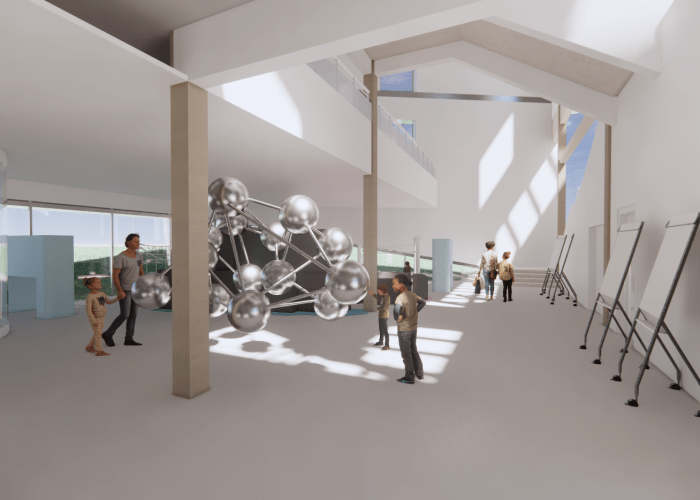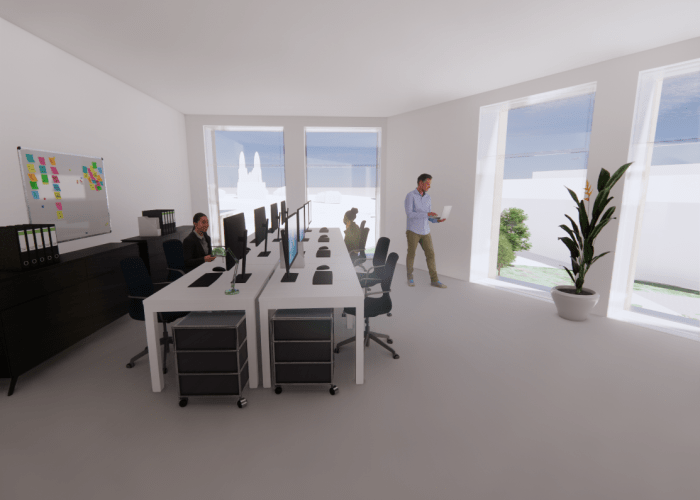Libraries, as the places with the services accessible and affordable by anyone, become the most frequently attended cultural buildings. The project brings the social and environmental sustainability into focus. The library design has been particularly oriented on the youngest user group – children and aims to respond to their needs in regards to functionality and indoor environment. It also carries a mission of strengthening local community and promoting culture and knowledge in largely undeveloped urban area in Poznań, Poland, however, with a great potential, due to its historical value and new cultural initiatives. The building will enrich the area with established new social and cultural functions, in order to enhance the quality of the place and encourage more people to visit library. The building’s form will be strongly related to the identity of the neighborhood and form an extra value by creating new public space.
Typology: cultural/educational
Location: Poznań
Size: 2,200 m2
Year: spring 2020
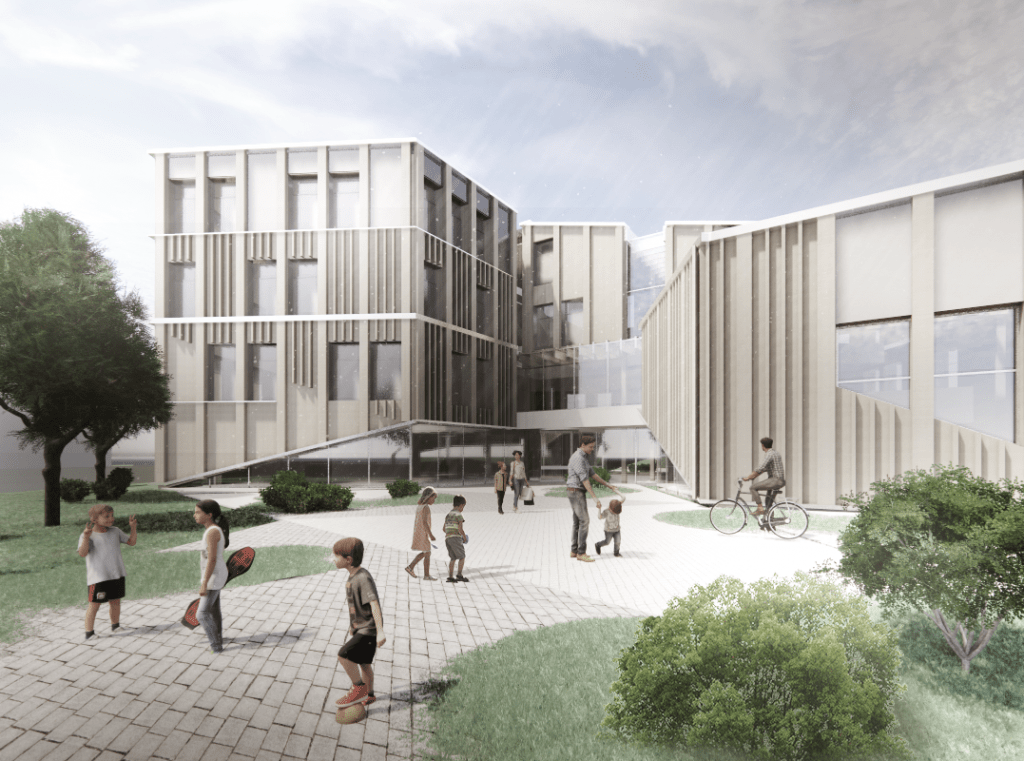
Site analysis
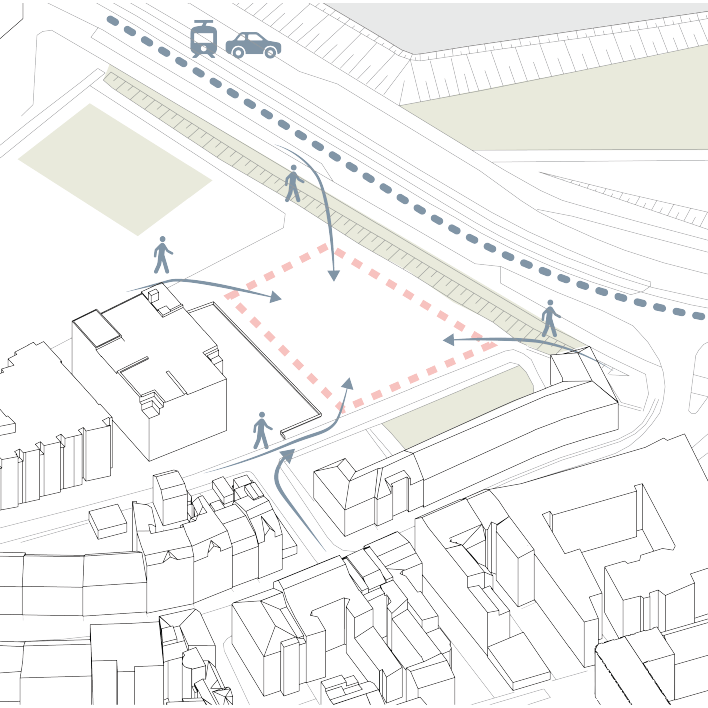
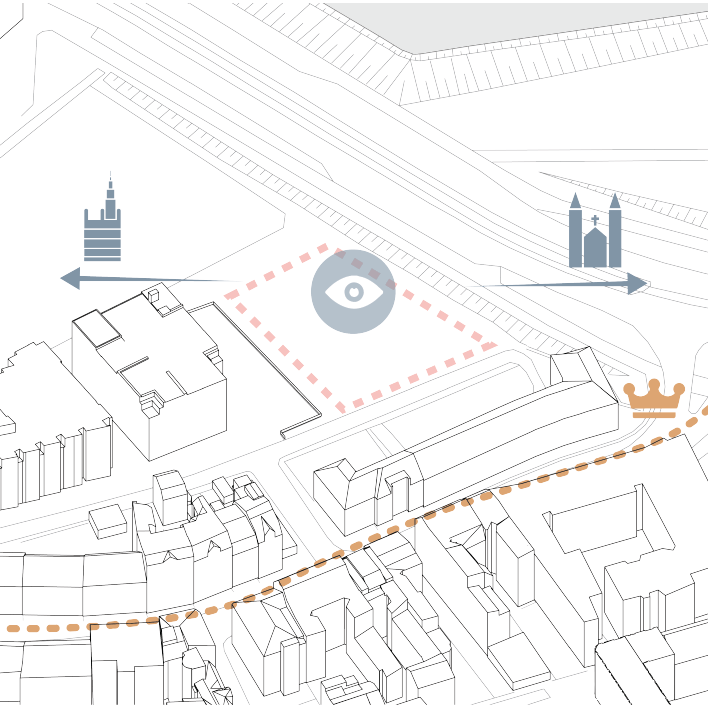
Concept
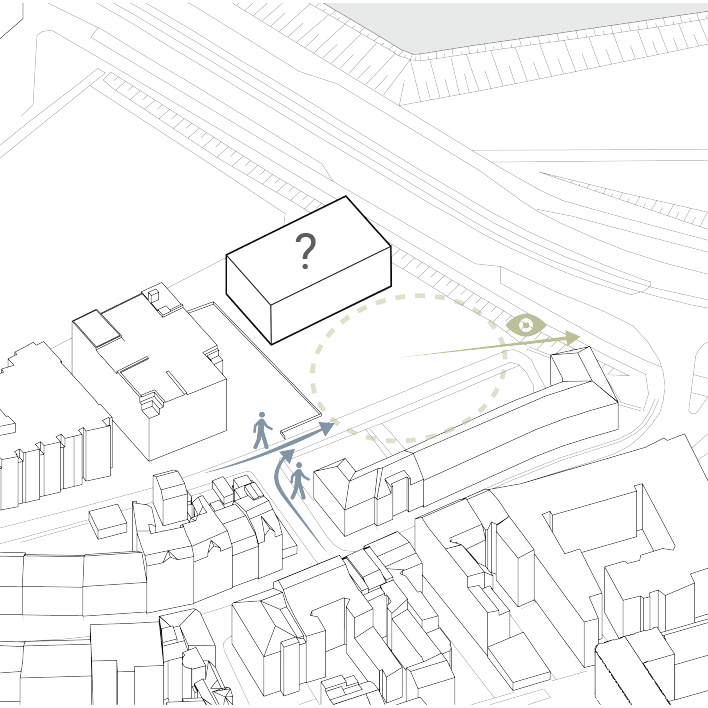
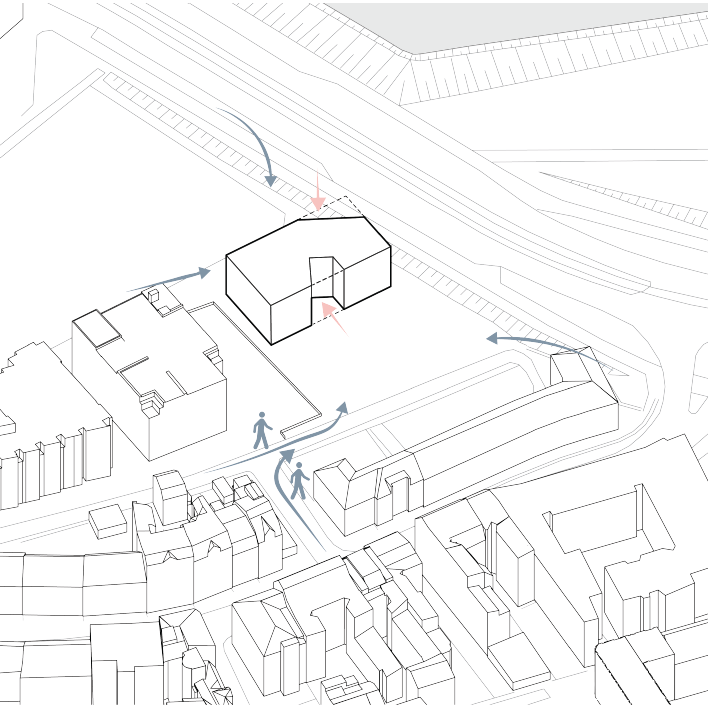
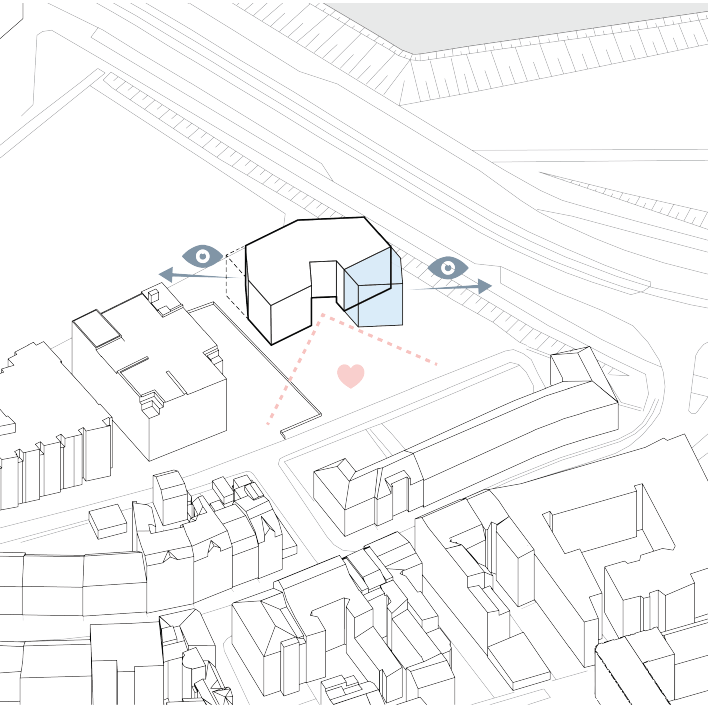

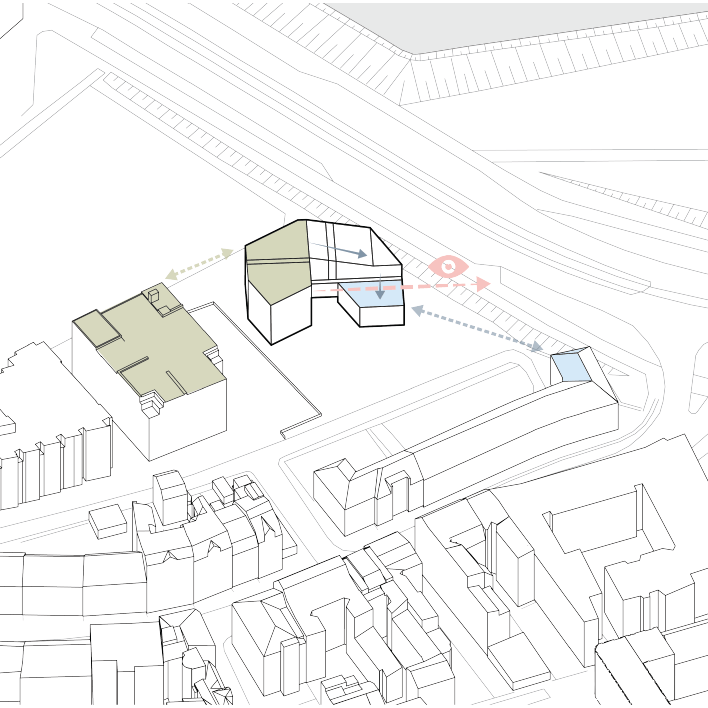
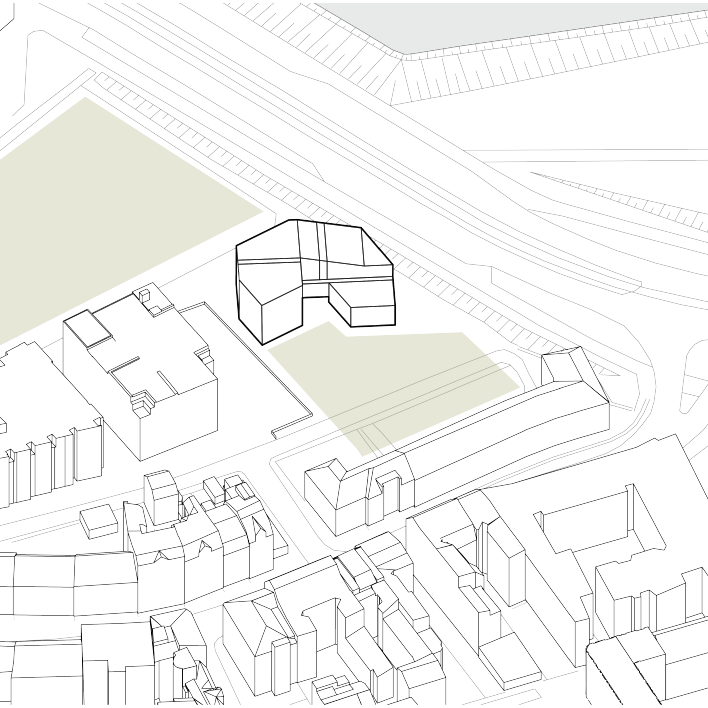
The building creates a transit between Chwaliszewo district and the city center. The main entrance to the library is framed by the high greenery and broad recreational space.
The building form is compact, which provides high energy efficiency. The daylight factor is improved by decreasing the building depth and designing skylights and double height spaces. The concept has a high potential of utilising natural ventilation effectively with the strong western wind. The orientation and shape of the building minimizes the risk of overheating; the sloping roofs can be utilised for gaining solar energy.
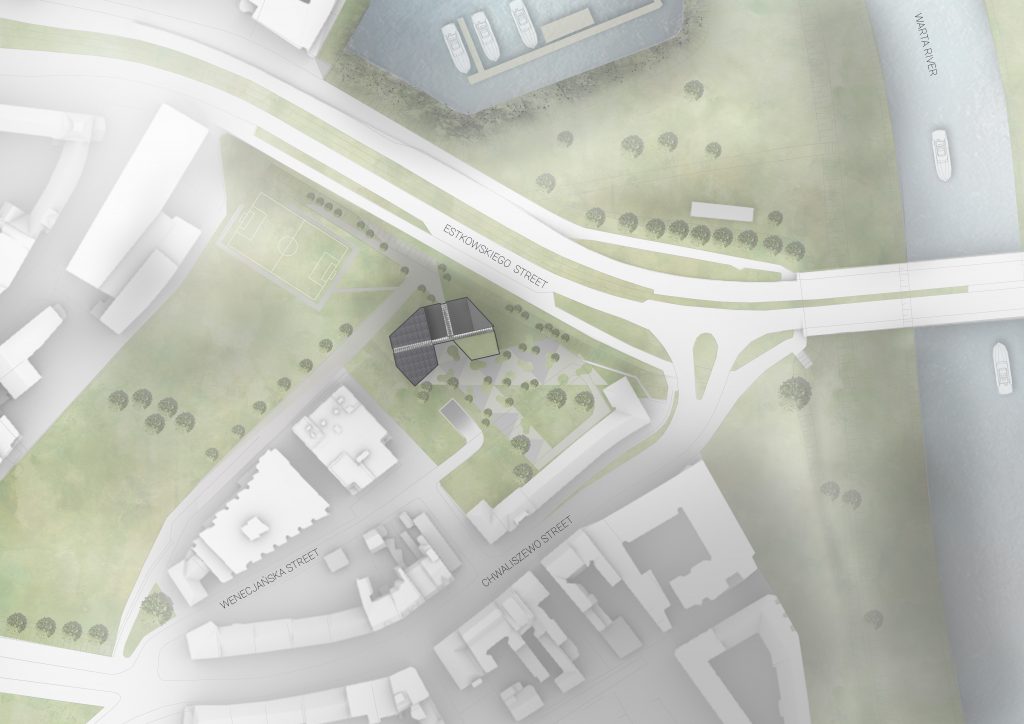
The building is divided into four zones. The library foyer is the most public, established on the grounfloor, and its role is to encourage people to explore the building through public events, exhibitions and spaces for children to play. The main library space is located on upper levels, with the largest spaces oriented towards the north, to provide more intimate and comfortable environment for children to learn. It offers a variety of spaces for different kinds of learning activities. The administration is the zone is on the top floor, where the staff can manage the library. The back of house is in the basement, where storage rooms, service rooms and underground parking can be found.
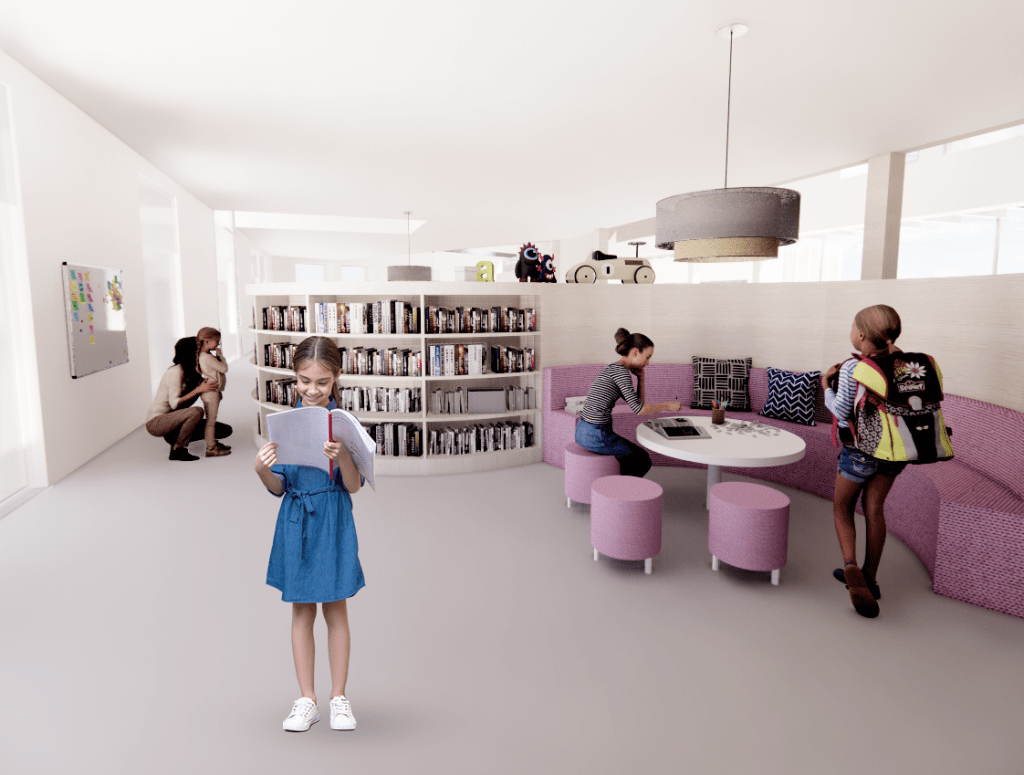
The indoor materials determine the quality of interior spaces. The goal of the interior design is to make spaces perceived pleasant aesthetically, tactilely and acoustically. Therefore, the wooden elements are instrumental, due to its porous, rough and warm surface. Solid wood, as an element of interior design, in a form of a board mounted on the wall or floor, has effective sound absorbing properties, due to its surface structure and elasticity. Moreover, it gives sounds extra warmth feeling. The furniture is designed to provide flexibility and comfort of the spaces – for learning and playing. The furniture is oval to ensure the safety of usage for the youngest users. Mellow colours of wooden furniture are supplemented with vivid elements, such as colourful seating, associated with the theme of the space, to make the library more vibrant and attractive for its users.
